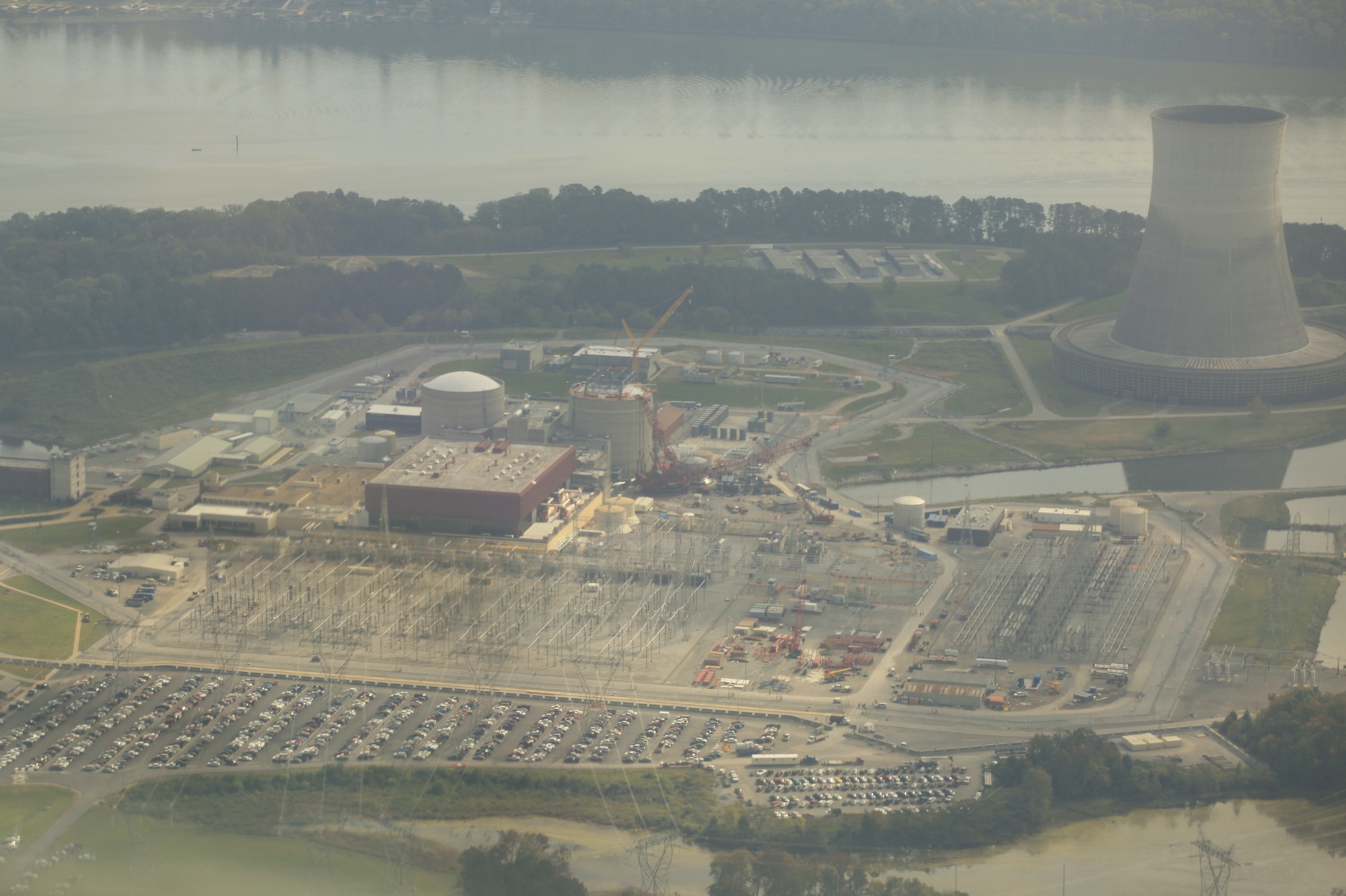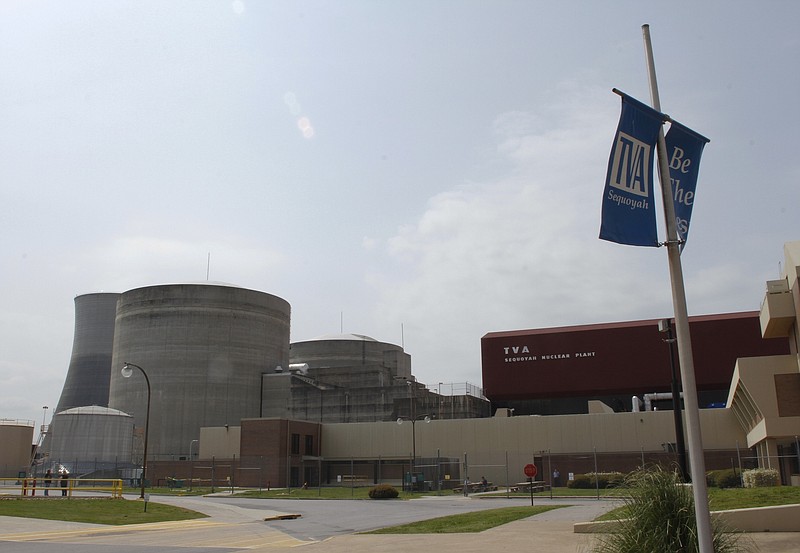The Tennessee Valley Authority can operate its Sequoyah Nuclear Power Plant until 2041 after regulators Monday approved license extensions for both of Sequoyah's reactors.
The U.S. Nuclear Regulatory Commission agreed to extend the operating licenses for both unit 1 and unit 2 at the Sequoyah for another 20 years beyond the units' originally planned lifespan. The NRC determined TVA had an adequate aging management program in place for the plant near Soddy Daisy, which TVA began building in 1969 and began power generation in 1981.
Unit 1 was previously licensed to operate until September 2020 and unit 2 was licensed to run until September 2021.
"This milestone is a direct reflection of our ongoing commitment to safely operate Sequoyah to benefit the people we serve every day," TVA's Chief Nuclear Officer Joe Grimes said in a statement Monday after the NRC granted the 20-year license extension. "Extending Sequoyah operations will play an integral role in reducing our carbon emissions while reliably supplying electricity at the lowest possible cost."
 Staff Photo by Dan Henry/Chattanooga Times Free Press - 10/10/12. Southwings volunteer pilot James Mills and Wild South director Jeff Hunter fly near the Sequoyah Nuclear Plant while on their way back from examining potential wilderness expansion areas in the Big Frog Wilderness late Wednesday morning.
Staff Photo by Dan Henry/Chattanooga Times Free Press - 10/10/12. Southwings volunteer pilot James Mills and Wild South director Jeff Hunter fly near the Sequoyah Nuclear Plant while on their way back from examining potential wilderness expansion areas in the Big Frog Wilderness late Wednesday morning. Over the past decade at Sequoyah, TVA has replaced the plant's steam generators, added dry storage casks for spent nuclear fuel and upgraded emergency equipment and flood controls to meet changing regulatory requirements imposed after the Fukushimi nuclear plant accident in Japan in 2011.
The two Sequoyah reactors bring to 78 the number of commercial nuclear power reactors that the NRC has granted license extensions for to continue operating another 20 years. Applications for an additional 16 renewals are currently under review.
The NRC granted similar 20-year extensions in 2006 for the three reactors at TVA's biggest nuclear power plant, the 3-unit Browns Ferry Nuclear Plant near Athens, Ala.
At Sequoyah, the NRC reviewed plant equipment, processes and procedures since TVA applied for the license extensions in January 2013.
Combined, the two reactors at Sequoyah generate up to 2,333 megawatts of power - enough to meet the electricity demands for more than 1.3 million homes. TVA projects that by extending its operating nuclear plants and finishing its Watts Bar Nuclear Plant, the federal utility can generate more than a third of its power from nuclear power, which does not emit greenhouse-causing gases into the atmosphere.
Sequoyah and its sister plant, the Watts Bar Nuclear Plant near Spring City, are both Westinghouse pressurized water reactors with ice condenser containment systems.
While the NRC required TVA to demonstrate the adequacy of its aging management program at Sequoyah, regulators have not imposed the same requirement for the Unit 2 reactor at Watts Bar which is scheduled to begin power generation late this year after more than 32 years of construction.
Dave Lochbaum, the director of the nuclear safety project at the Union of Concerned Scientist and a former NRC engineer, on Monday questioned the NRC's conflicting approaches to Sequoyah and Watts Bar.
"The NRC is preparing to license Watts Bar Unit 2 to operate for 40 more years without looking at all, yet alone determining, whether TVA has an adequate aging management program for its passive components," Lochbaum said. "What we do not understand is how the NRC is making two licensing decisions that are exactly opposite. While being inconsistent increases the chances of being right at least once, it also increases the chances of being wrong at least once."
Although Watts Bar unit 2 has yet to generate power, it is nearly as old as the Sequoyah unit that NRC required TVA to demonstrate was still structurally adequate for safe operations.
"Safety dictates that NRC use its smarts to protect the public from all reactors, not such some reactors," Lochbaum said. "No matter what their PR people claim, the NRC cannot possibly be right both times."
NRC commissioners have authorized its staff at the regional office in Atlanta to issue an operating license for the Unit 2 reactor at Watts Bar once TVA completes some final tests. The unit is expected to soon load nuclear fuel and could generate power before the end of calendar 2015.
Contact Dave Flessner at dflessner@timesfree press.com or at 757-6340.
